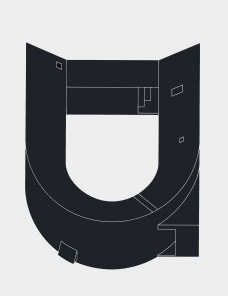San rocco - innocence
San rocco - innocence
Matteo Ghidoni (Org.)
San Rocco, Venice; 1st edition, 2010
0 - Summer 2010
edition: english
paperback
152 p
17 x 23 x 1 cm
400 g
illustrated
B&W
photos
drawings
ISBN
ISSN
(, )

about the book
San Rocco is the name of a place in Monza, not a nice place. Giorgio Grassi and Aldo Rossi engaged in a design competition for this place in 1971. The project was not built; ordinary housing blocks were built instead.
A few negligible drawings of the San Rocco project have survived in old monographs, along with a black-and-white photograph of the competition model. It is a picture taken from above of the white plaster model. Close to the buildings there is a large label in relief lettering that casts dramatic shadows and reads “MONZA – SAN ROCCO scala 1:500″
San Rocco was the product of the collaboration of two young architects. San Rocco did not contribute to the later fame of its two designers. It is neither “standard Grassi” nor “standard Rossi”. Somehow it remains between the two, strangely hybrid, open and uncertain, multiple and enigmatic.
The purity and radicalism of the design does not involve any intolerance. San Rocco suggests an entirely new set of possibilities. It seems to be the beginning of a new type of architecture, or the first application of a new type of architecture, or the first application of a new – and happy – design method that has not been developed further.
San Rocco proposes the possibility of reusing architectural traditions that lie outside of private memory (contrary to Rossi’s usual approach) without erasing personal contributions (contrary to Grassi’s usual approach). In San Rocco, common does not mean dry, and personal does not mean egomaniacal. San Rocco seems to suggest the possibility of an architecture that is both open and personal, both monumental and fragile, both rational and questioning.
SAN ROCCO. INNOCENCE
A present from 2A+P/A. Stefano Boeri on the house Toyo Ito designed for his sister Nobuko and her daughters. Marco Brizzi on Renzo Piano's television programs. Guy Châtel on Hannes Meyer's schools. Salomon Frausto on Frank Gehry's Indiana Avenue Studios. Francesco Garofalo on Irenio Diotallevi, Franco Marescotti and Giuseppe Pagano's horizontal city. Kersten Geers on Hans Hollein's Travel Agencies. Stefano Graziani's photos of OMA's Zeebrugge ferry terminal. Job Floris on the Monadnock Building. Freek Persyn on Kazuo Shinohara's houses. Daniele Pisani on João Batista Vilanova Artiga's balneário. Joana Rafael writes a letter to the London Zoo. Salottobuono proposes restoring Piero Bottoni's Villa Muggia. Pier Paolo Tamburelli on the Villa Garzoni. Oliver Thill on the White U. Milica Topalovic on the "New Naive". Christophe Van Gerrewey on the art of building a house for a sister. YellowOffice reveals an unknown design for New York's Central Park. Andrea Zanderigo on Hans Kollhoff's design for Frankfurt's ethbological museum.
about the author
Matteo Ghidoni
Architect, Ph.D candidate in Urban Studies at IUAV, Venice. Academy in Milan (Master in Urban Design). Since 2003 he is member of Multiplicity research agency, Milan.


